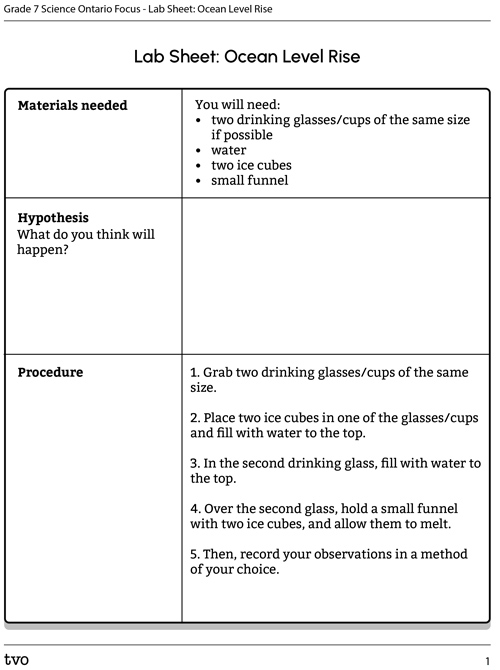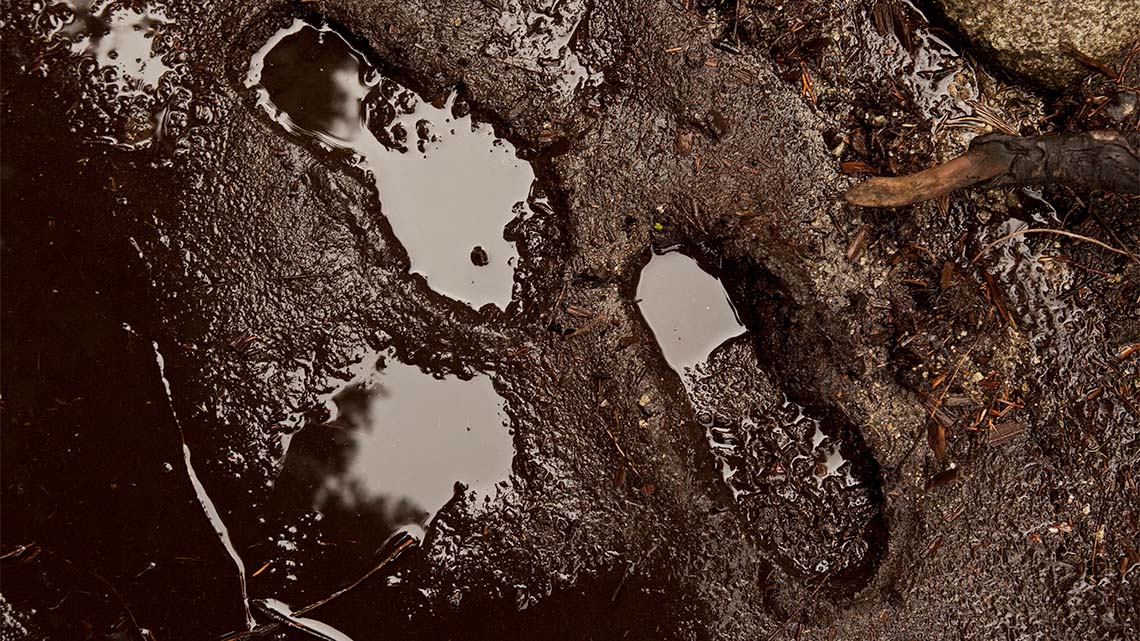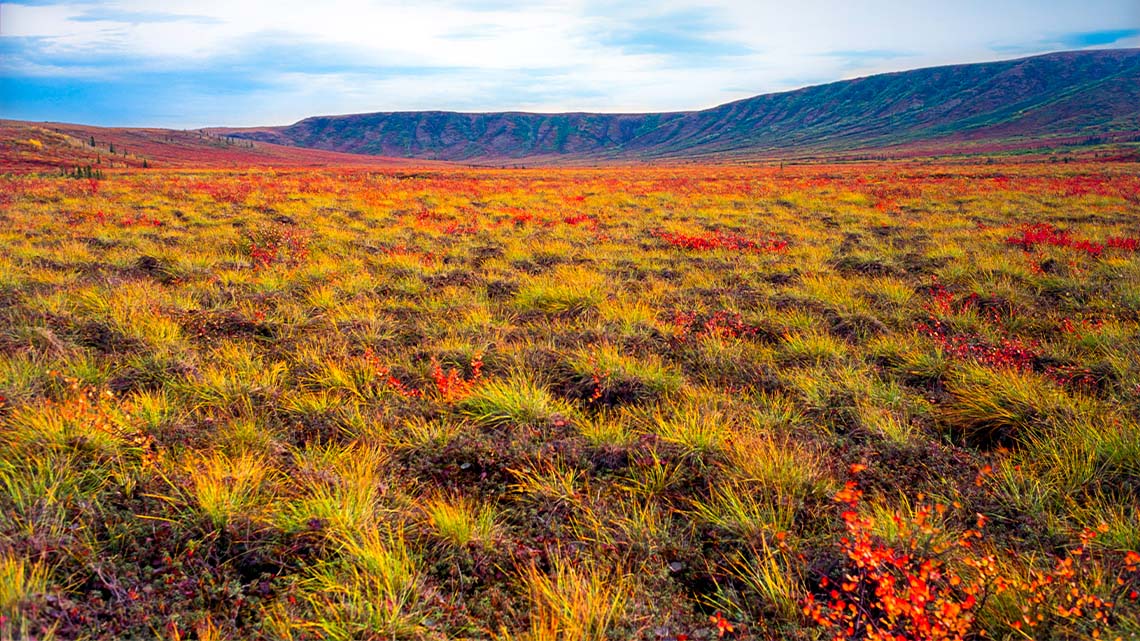Minds On
It’s getting hot, hot, hot
The sun has an impact on a lot of Earth’s surfaces. Asphalt is one of them.
Asphalt is a material used to build roads, driveways, walking paths and parking lots.
Explore the following video to learn more about the effect on asphalt during a hot sunny day.
What do you notice?
Brainstorm
Brainstorm
What do you think happens to asphalt in the sun?
On a day when the sun is very intense, what might be some of the impacts on:
- humans driving across an asphalt road?
- animals moving across an asphalt path?
Record your ideas in a notebook or another method of your choice.
If possible, share your ideas with a partner and compare.
Action
Albedo effect
As sunlight reaches the Earth’s atmosphere and surface, some of it is absorbed, and some of it is reflected back into space.
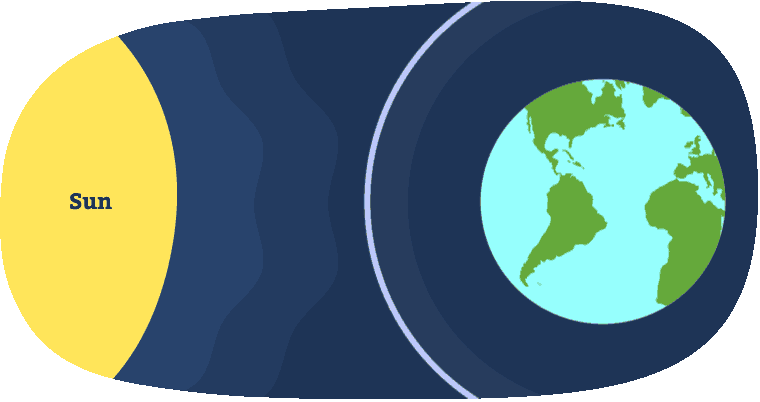
Explore the following Science North video to learn more about the Albedo Effect.
After exploring the video, let’s reflect on what we learned about the Albedo Effect.
Select the correct answer, then press ‘Check Answer’ to see how you did.
Investigate
Investigate
Let’s investigate the following video demonstrating the Albedo Effect.
After exploring the video, what do you notice?
Record your ideas in a notebook or another method of your choice.
Press ‘Hint’ to access a suggested answer.
In the video, you might have noticed that the ice cube that was placed on the darker towel began to melt faster than the one placed on the lighter towel. This is because the sun is attracted to the darker fabric, and therefore causes it to warm up quicker and melt the ice cube.
Let’s experiment!
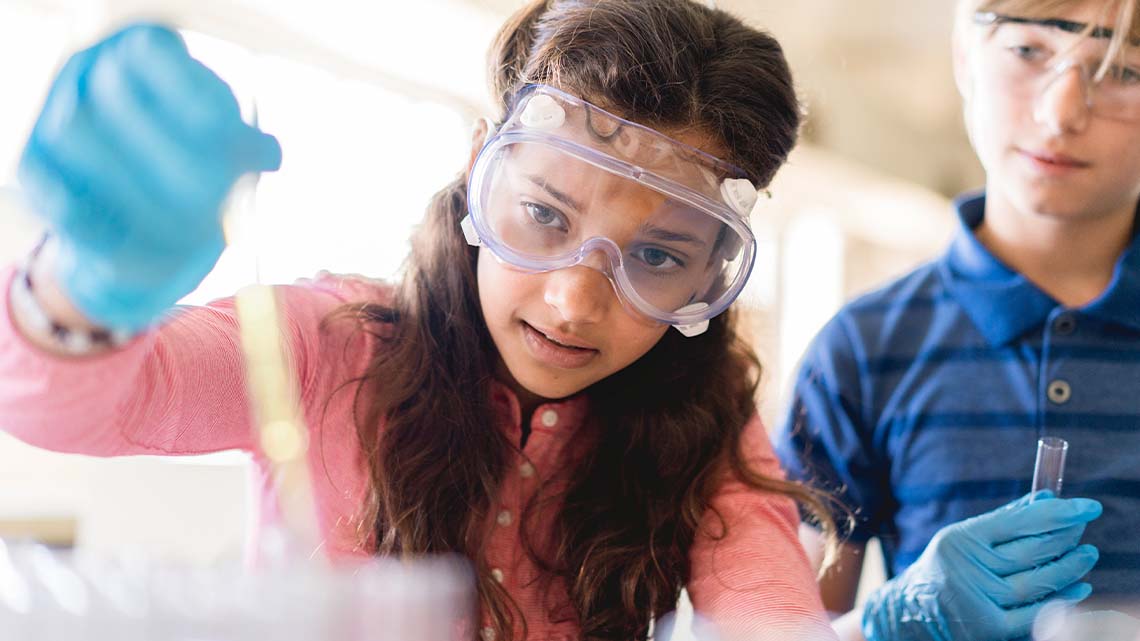
As Earth’s climate changes, there is a rapid increase in overall temperatures, and we notice a loss of reflectivity by the Earth’s surface. As weather patterns shift, so does cloud formation, which impacts the Earth’s Albedo. When it comes to climate change, glaciers and ice fields that are currently found on land, contribute to the rising ocean levels.
Before beginning the experiment, explore this video to learn more about the steps of the Scientific Experimentation Process.
Safety
Before you explore the following experiment, let’s perform a safety check.
Hands-on Science
Ocean level rise
For this experiment, we will be learning about the effects of melting ice on ocean levels.
Complete the Lab Sheet: Ocean Level Rise in your notebook or using the following fillable and printable document. If you would like, you can use speech-to-text or audio recording tools to record your thoughts.
Press the following tabs to access the materials and procedure for the Ocean Level Rise experiment.
If you do not have access to materials, access the “Video demonstration” tab to explore the experiment in action. You can use the video to make your observations and draw your conclusions.
You will need:
- two drinking glasses/cups of the same size if possible
- water
- two ice cubes
- small funnel
- Grab two drinking glasses/cups of the same size.
- Place two ice cubes in one of the glasses/cups and fill with water to the top.
- In the second drinking glass, fill with water to the top.
- Over the second glass, hold a small funnel with two ice cubes, and allow them to melt.
- Then, record your observations in a method of your choice.
Check out this video to explore a demonstration of the Ocean Level Rise experiment. Please note that materials and procedure in the video may vary slightly from what is listed in the previous tabs.

Science is about reflecting and reimagining. Was your experiment successful?
Is there anything that you would change about your experiment design to improve it or the outcome?
Even if your experiment was not successful, what did you learn or confirm about the topic you were investigating?
Press ‘Let’s Check!’ to access a possible response for the follow-up questions.
What happened in this experiment?
As the ice cubes melt, the amount of water in the glass rises. This represents the sea level rise. As large glaciers melt, they cause a rise in sea levels.
How did this experiment connect to your learning about the Albedo Effect?
The melting of the sea ice causes a loss of Albedo in the area, and this causes warming of the permafrost regions.
Reflect and absorb
The Earth’s climate depends on a balance of incoming and outgoing energy from the sun, which is determined by the Albedo. The overall Albedo of the Earth affects how much solar energy is reflected and absorbed.
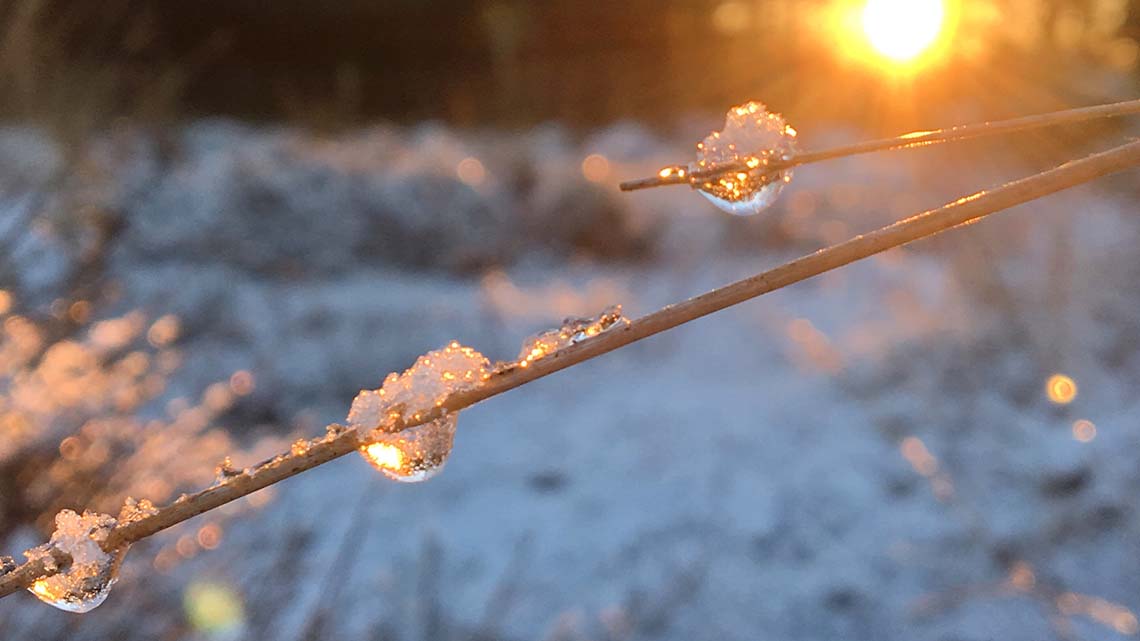
As the climate warms, snow and ice melt, and the Earth’s surface becomes less reflective (especially if sea ice melts, revealing open ocean, which is very dark), more solar energy is absorbed by the Earth’s surface rather than being reflected back to space, causing the temperature to increase and the cycle to continue.
Changes that people make to the land surface also tend to increase Albedo. This means the Earth reflects more sun rather than absorbing it, which rises temperatures.
When forested lands are cleared, this tends to produce more reflective land surfaces. Bare land reflects more solar energy than dense forest and therefore has a higher Albedo.
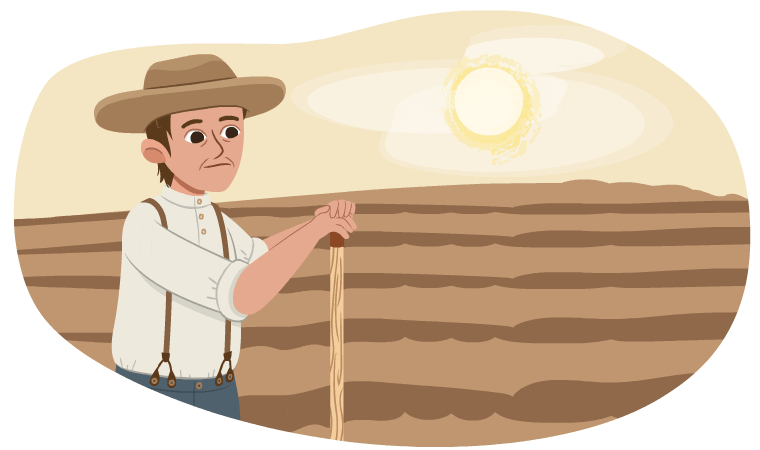
Which is reflective?
Explore the following images:
After exploring the images, rate each surface from most reflective to least reflective.
Record your thoughts in a notebook or another method of your choice.
Ontario connection
This learning activity highlights people, places, or innovations that relate directly to the province of Ontario. Enjoy the exploration!

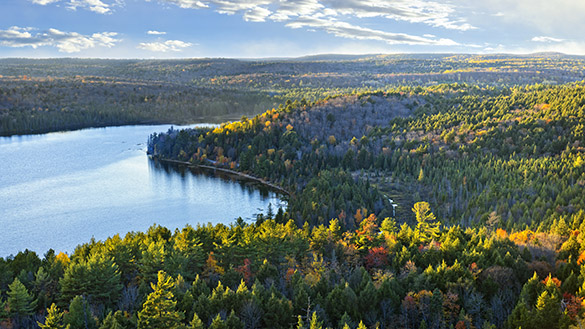
The boreal forest is the largest forest region in Ontario and Canada. Surface Albedo is occurring in the boreal forest and is directly affected by human activities, such as harvesting, and natural occurrences, like forest fires. With controlled activities, the boreal forest could increase the Earth’s Albedo, reducing the effects of climate change.
Complete the Cause-and-Effect Graphic Organizer in your notebook or using the following fillable and printable document. If you would like, you can use speech-to-text or audio recording tools to record your thoughts.
| What causes the Albedo Effect? | What does it affect? Why should we care? |
|---|---|
Press the ‘Activity’ button to access Cause-and-Effect Graphic Organizer.
Consolidation
Review your learning
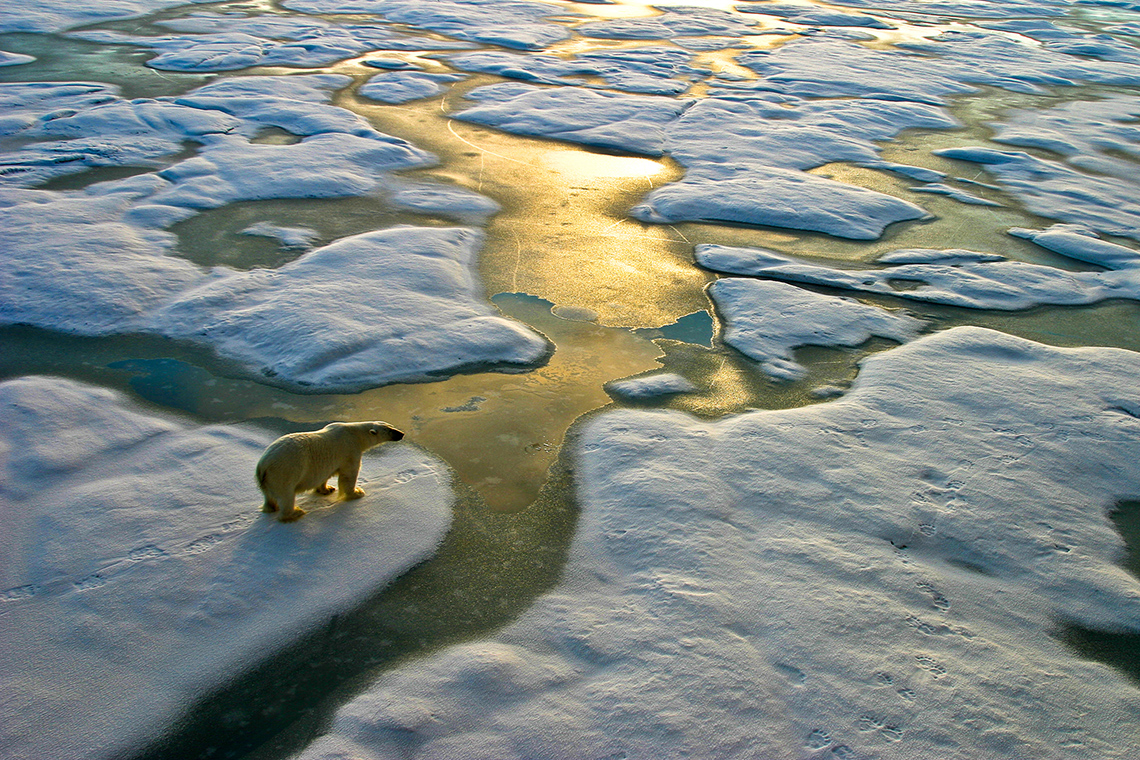
Select the correct answer, then press ‘Check Answer’ to see how you did.
Pause and Reflect
Pause and reflect
Choose one of the following questions to respond to:
- What questions you would ask to reduce the loss of albedo in the Arctic environment? What strategies might you recommend in these regions?
- How can controlled harvesting and fires in the Boreal Forest help to reduce the impacts of climate change? Be sure to refer to the Albedo Effect.
Record your ideas in a notebook or another method of your choice.
Reflection
As you read the following descriptions, select the one that best describes your current understanding of the learning in this activity. Press the corresponding button once you have made your choice.
I feel…
Now, expand on your ideas by recording your thoughts using a voice recorder, speech-to-text, or writing tool.
When you review your notes on this learning activity later, reflect on whether you would select a different description based on your further review of the material in this learning activity.
Press ‘Discover More’ to extend your skills.
Discover MoreContinued exploration…
Always be sure to do your safety checks before any experiment!
To better understand the Albedo Effect, check out the following activity:
- Grab two coloured clothes, preferably black and white (you could also use a darker and lighter colour as substitute).
- Place the clothes in the sun, side-by-side.
- Then, place an ice cube on each of the clothes and explore which one melts faster.
- Observe the two clothes.
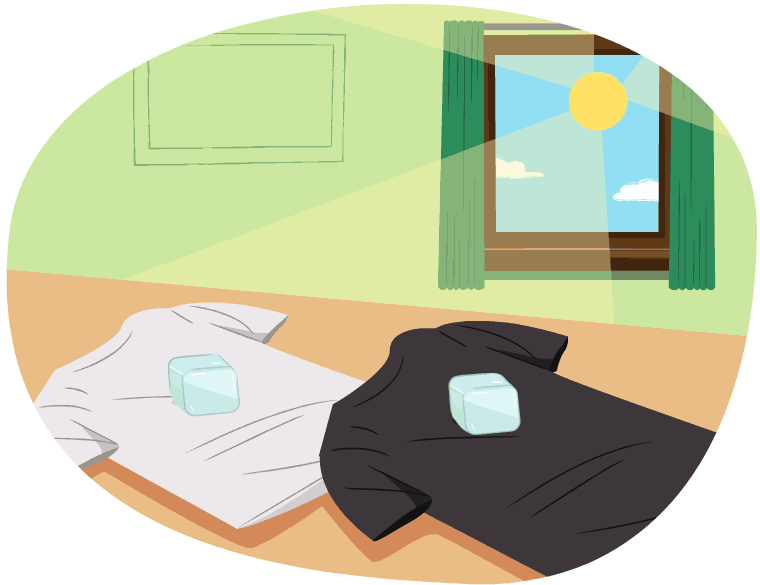
Record your observations in the Observation Table or using the following fillable and printable document. If you would like, you can use speech-to-text or audio recording tools to record your thoughts.
|
I observe: |
What can you observe with the senses? |
|
I infer: |
What did you notice and what do you already know? |
|
I wonder: |
Are there any questions you may have? |
Press the ‘Activity’ button to access Observation Table.
